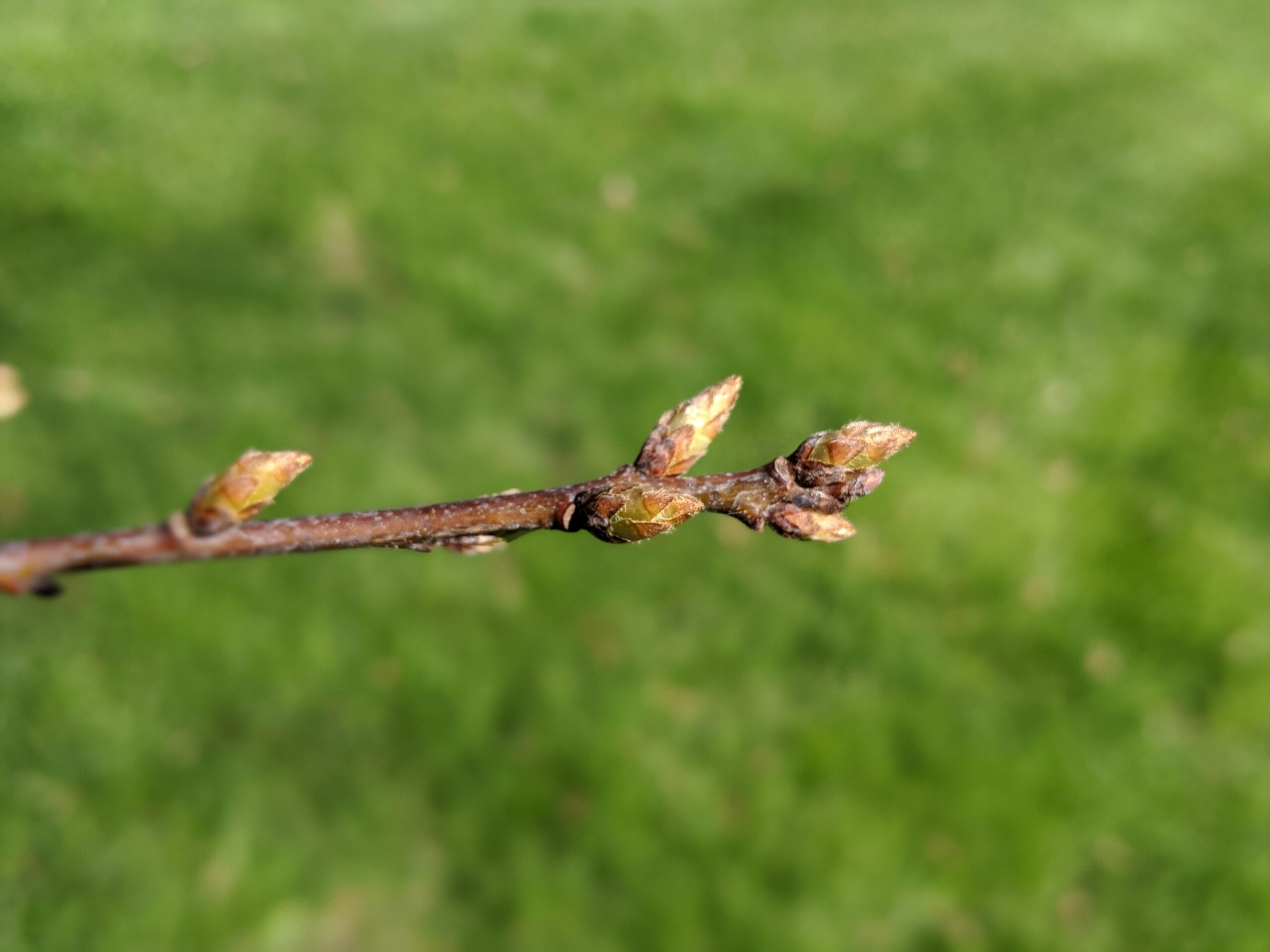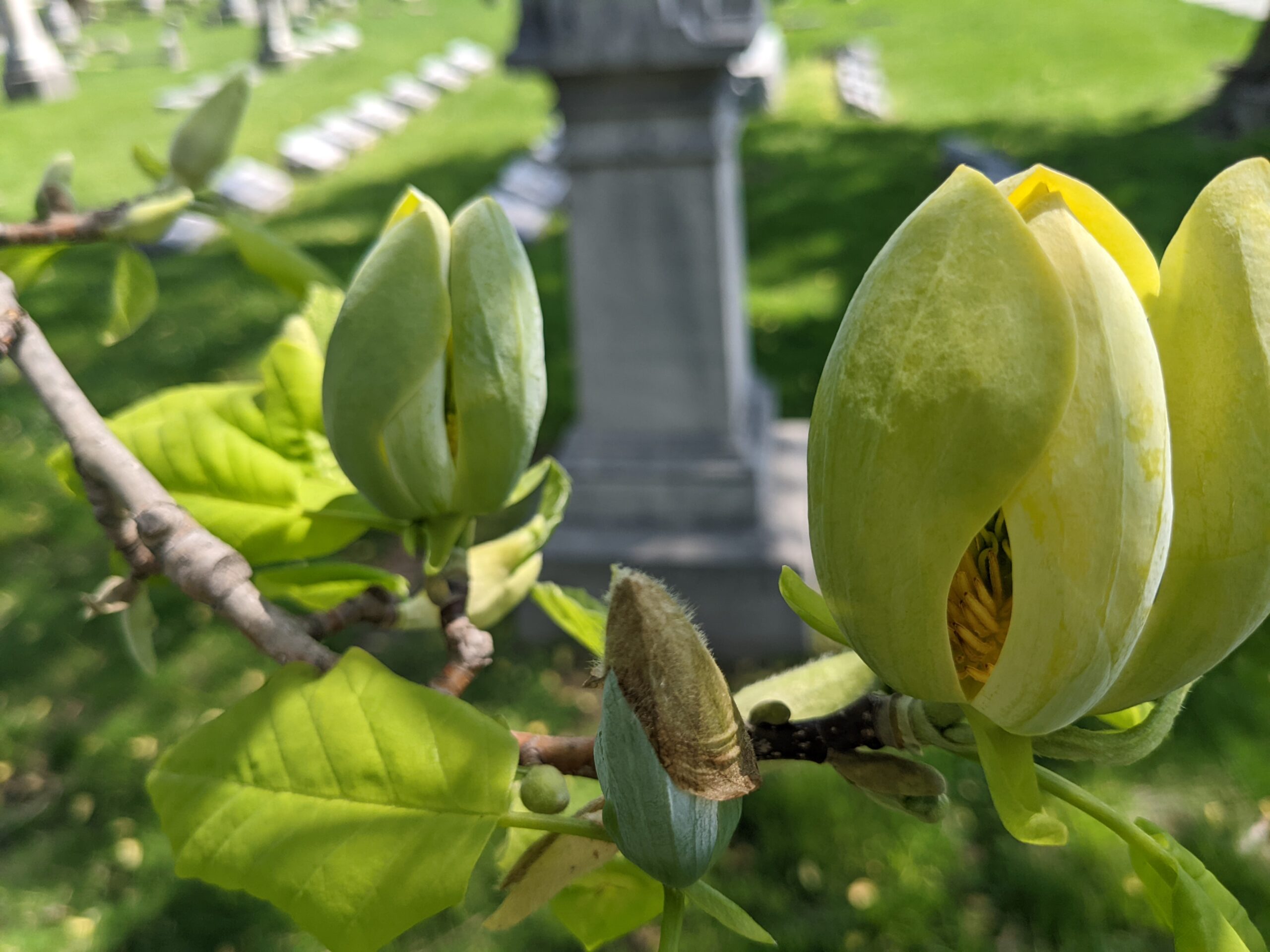We All Love the Flowers, But Have You Seen Bud Break?

Spring blooming trees assure us that winter is behind us. Our spring bloomers play a critical role in supporting native bee populations and our European cousins — the honeybee. But what we really love to see each spring is bud break.
Each season, deciduous trees store sugars and starches in their roots and stems for the long haul but also prepare suitcases (their buds) with all the leafy and flowery parts they will need to start the next season off right and fully dressed. These micro tree parts are protected by a wide range of specialized structures called bud scales, like little shields, that range from waxy and sticky to fuzzy and flakey, and sometimes these small tree parts go into the winter protecting themselves with only tiny micro hairs called pubescence.

Each spring, when the growing degree days add up, these tiny, armored suitcases start to loosen up and the tree parts inside expand. During that process, we get to watch the plant equivalent of fireworks in super slow motion. As the bud scales flake away or expand, everything inside the buds changes color, texture and shape. Each day, the tree’s stems or buds grow and expand. What’s amazing is, depending on the tree species, a bud may contain leaves, flowers or both! And that makes the show even more exciting.
The apical bud is the primary bud at the top of any tree or tip of any branch. This bud is the primary guide for where the tree will grow next and how branches get longer, and trees get taller. Like stacking blocks or Legos, a tree’s woody growth starts from where it left off the previous year. Once cells grow and harden off, they don’t change or move their location within the tree’s structure. Apical buds tend to be larger and more prominent than secondary or lateral buds because they contain the cells and the energy to develop new twigs and branches. These are also the most impressive buds to seek out within a tree.
We can’t wait for you to see how amazing trees are even at this micro scale. And if you feel like you need a little guidance, feel free to check out the tree tours we have scheduled throughout this season.

